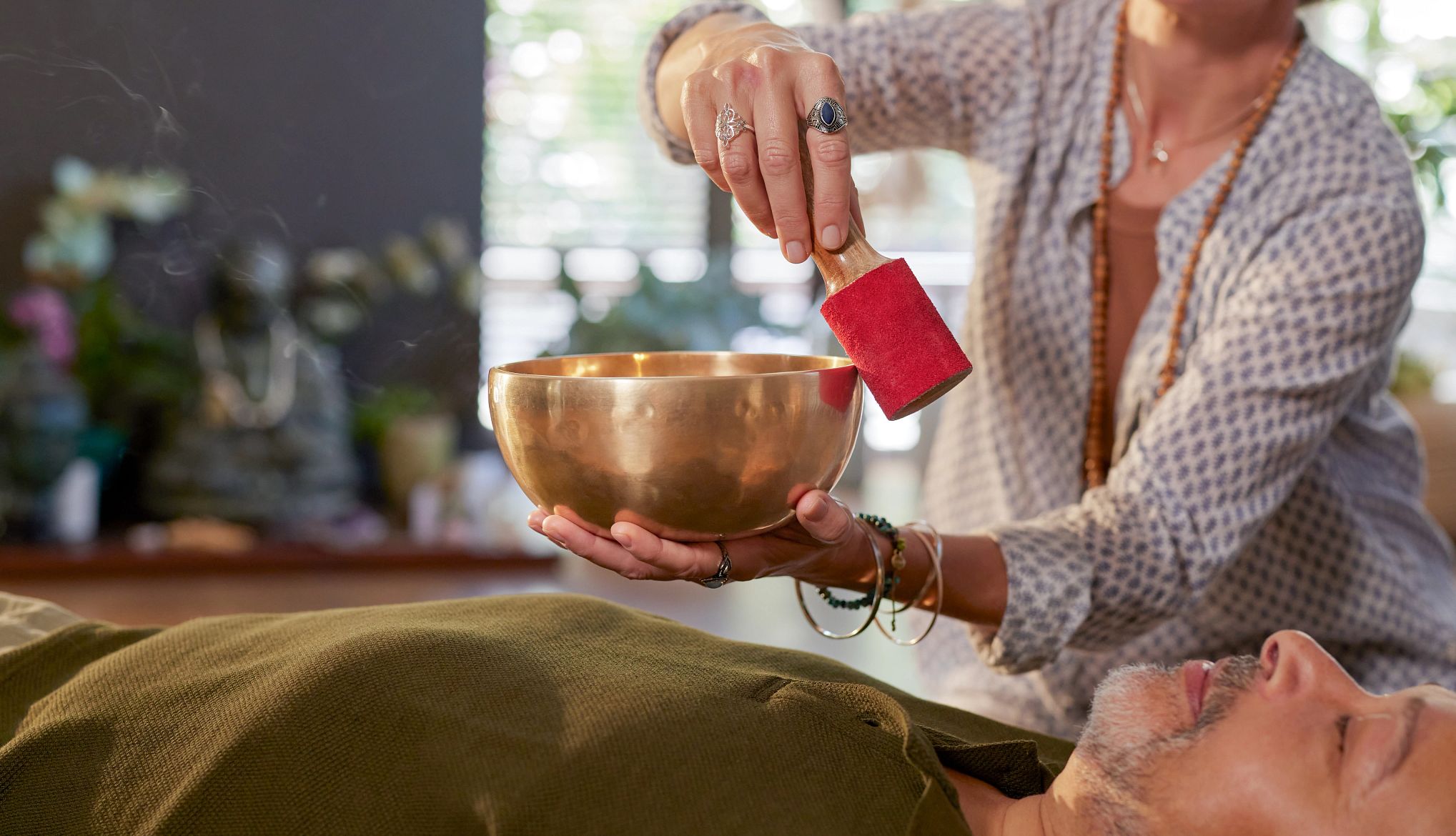AARP Hearing Center


The strike of a gong. The beat of a drum. The tinkle of chimes.
These are the makings of a sound bath — a relatively new term for an ancient practice that describes “the feeling of sound waves washing over the body,” explains Tamara Goldsby, a research psychologist in integrative health at the University of California, San Diego.
Also known as sound healing or sound meditation, sound baths are becoming standard practice in spas, yoga studios and other wellness spaces to help people unwind. And research suggests they could come with some health benefits for older adults.
Knowing how to relax is important in the second half of life. Common stressors in older adults — such as chronic illness, grief and loneliness — can lead to inflammation, which can then contribute to a number of other health problems, including arthritis and type 2 diabetes, according to the American Institute of Stress. Anxiety is thought to affect as much as 10 to 20 percent of older adults, although the condition often goes undiagnosed, reports the National Council on Aging.
Sound baths tend to resonate with older adults, no matter their age or mobility level, because they require no learning curve and can be enjoyed while lying on a mat or sitting in a chair.
“It’s very common for participants to fall asleep,” says Goldsby. “You can sometimes hear them snoring.”
How sound baths support a beginner’s mind
Sound baths use a combination of sound, frequency and vibration. Why is this a trifecta worth experiencing? For starters, Goldsby says, the sounds that resonate during sound baths seem to instill a much deeper level of relaxation than one gets from merely listening to calming music. Researchers aren’t clear why these sounds are more effective, Goldsby says, but that is being studied.
Sound Bath Instruments
Types of instruments used in sound baths might include:
- A gong
- Crystal singing bowls
- Metal bowls
- Tibetan singing bowls
- Tuning forks
- Chimes
Source: Cleveland Clinic
Many sound baths use bowls tuned to 432Hz — a frequency often linked with Greek philosopher and mathematician Pythagoras, and that some believe can be physically, psychologically and even spiritually beneficial.
As we age, we tend to become increasingly numb to things we experience on a daily basis and can take them for granted — the trees, the clouds, even conversations with our loved ones, says Diana Parra Perez, a mindfulness researcher and assistant professor at Washington University in St. Louis.




































































More From AARP
7 Ways Working Out is Great for Mental Health
Exercise boosts mood, reduces depression and eases anxiety
Are You Ready to Give Meditation a Try?
A beginner's guide to quieting the mind in a time of stress25 Tips to Better Manage Stress
From scheduling stress and serenity to eating away the inflammation, here are ways to cope